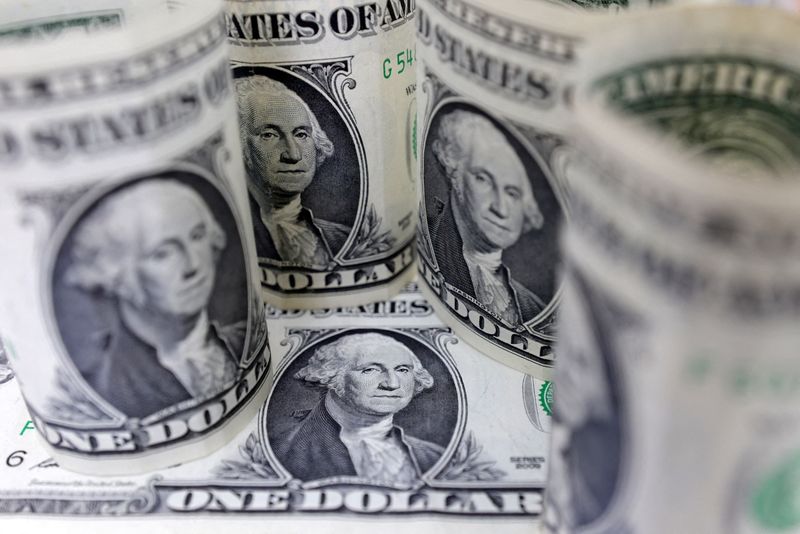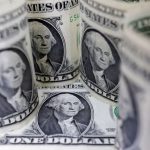LONDON (Reuters) -The dollar was steady on Monday, holding its biggest weekly gain since 2022, as the prospect of stubbornly high U.S. interest rates and escalating conflict in the Middle East gave support.
The dollar rose 1.6% against a basket of six major currencies last week after a small but unnerving upside surprise in U.S. inflation cast doubt over bets on U.S. rate cuts, while European policymakers signalled a cut within a few months.
The initial moves in currencies on Monday seemed to be based more on the receding Federal Reserve rate cut expectations than a weekend attack on Israel by Iran, from which the broad market reaction has been relatively muted.
“It is too early to judge,” said Jason Wong, senior market strategist at BNZ in Wellington. “It was really a symbolic attack over the weekend …, never really designed to inflict much damage – it’s now over to what Israel’s response will be.”
Iran had warned of a strike on Israel and over the weekend launched over 300 drones and missiles in retaliation for what it said was an Israeli attack on its Damascus consulate. The unprecedented drone and missile volley caused only modest damage and Iran said it now “deemed the matter concluded”.
The dollar index, which measures the currency against a basket of six others, was last little changed at 105.92, just below Friday’s 5-1/2 month high of 106.11.
“If you want a safe-haven currency right now, the dollar is the best place to go,” said Chris Turner, global head of markets at ING, citing ample liquidity, high U.S. deposit rates and U.S. energy independence.
The yen was the main loser on Monday, marking a 34-year low at 153.93 to the dollar.
The yen’s slide against the dollar has revived anticipation of currency intervention. Japanese Finance Minister Shunichi Suzuki said he was watching currency moves closely, and that Tokyo is “fully prepared” to act.
“I think if dollar-yen got up to 155, Tokyo would intervene,” ING’s Turner said.
“If there was some greater escalation in the Middle East the yen could benefit at the margin because it’s the largest short position in the market.”
U.S. RATE CUT BETS RECEDE
The dollar stands to benefit as investors continue to slash bets on Fed cuts and push back the expected start of the easing cycle to September after Wednesday’s hotter-than-expected consumer price (CPI) report.
“It is a data-light week so all eyes will turn to Fedspeak where more than a dozen voting members on the FOMC are likely to emphasise patience after last week’s blowout CPI print,” said Nicholas Chia, Asia macro strategist at Standard Chartered (OTC:SCBFF) Bank.
The two-year Treasury yield, which is sensitive to changes in interest rate expectations, surged past 5% on Thursday. The yield was last at 4.93%.
The euro recorded its biggest weekly percentage drop since late September 2022 last week, while sterling had its largest weekly percentage drop since mid-July.

On Monday, the euro was up around 0.2% at $1.0660 but stayed close to a five-month low of $1.06225 reached on Friday.
Bitcoin fell below $62,000 on Sunday, losing $10,000 or 15% from highs a week ago. It was last up at $66,381.
To read the full article, Click Here

